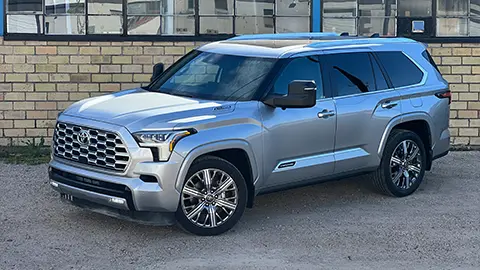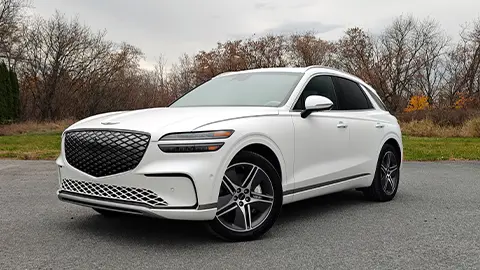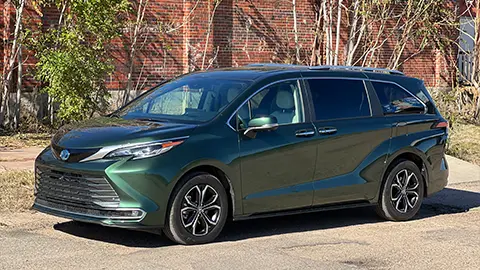Mercedes' European Grand Tour
The Mercedes-Benz Vision EQXX concept car, first unveiled at the Consumer Electronics Show in early 2022, has taken to the roads of Europe to demonstrate its outstanding range and efficiency. Travelling from Mercedes’ home in Sindelfingen across the Swiss Alps and Northern Italy, to its destination of Cassis on the Côte d'Azur, the prototype EQXX covered more than 626 miles in everyday traffic, on a single battery charge – a staggering distance for a gasoline car, never mind an electric car.
And the journey was not completed under ideal conditions, either, or at artificially low speeds. The trip started in cold and rainy conditions in Germany, and included prolonged fast-lane cruising at over to 85 mph on the German autobahn, and at or near the speed limit throughout the 600-plus miles. The battery's state of charge on arrival was around 15 percent, amounting to a remaining range of another 85 miles – meaning the EQXX’s theoretical range would be just under 700 miles!
The German company made sure that the run was supervised and verifiable – in fact, the entire trip was completed with the charging socket sealed, and with an independent expert from the independent certification body TÜV Süd on board the vehicle. The impressive distance achieved confirms the effectiveness of the new Mercedes-Benz development approach – thinking holistically about efficiency from the drivetrain to aerodynamics and beyond, down to the tiniest detail.
To show what is electrically “feasible” with all its tech, EQXX’s one day road trip crossed several European borders: from Germany to Switzerland, on to Italy, past Milan and finally to its destination, the port town of Cassis near Marseille in the South of France. The route profile – from motorway to mountain passes, including construction – and the weather conditions presented the car with a wide variety of challenges.

Aerodynamics Helps High Speed Driving
Departing from Mercedes’ Sindelfingen R&D center near Stuttgart in cold conditions, temperatures from start to finish ranged from the low thirties to mid-seventies Fahrenheit. North of the Alps, there was light rain and further south, a headwind blew in the sunshine.
The first leg from Sindelfingen to the north-eastern border of Switzerland ran along Autobahn 81. At times, the EQXX sliced through the wind at speeds of up to 85 mph, proving the worth of its slippery shape and low drag coefficient. Efficiency starts with the basic shape of the body, which flows elegantly like a water droplet towards the rear. Equally beneficial to the aerodynamics are the small frontal area and the reduced rear track. Because the rear track is narrower than at the front, the rear wheels roll in the slipstream of the front wheels. The active rear diffuser, which automatically deploys at 40 mph, provides better airflow and thus contributes significantly to the reduced drag.
Further efficiency gains come from the tires, with their extremely low rolling-resistance. Bridgestone developed tires specifically for the EQXX in partnership with Mercedes-Benz. The dimensions of 185/65 R 20 mean the special tires have a large diameter, but a narrow tread, almost like a bicycle. In addition, the transition from the tire to the wheel rim was optimized in cooperation with the Mercedes-Benz aerodynamics team.

Making "Light" Work Of The Alps
The EQXX lightweight construction has a positive effect on uphill climbs. Keen cyclists know why it’s always the same kind of rider out in front on mountain stages. The heavier, more muscular sprinters are always staring at the taillights of wiry featherweights on the uphill slogs. The decisive factor is the power-to-weight ratio. It’s not about sheer performance, but about endurance and lower energy consumption.
This is exactly what the EQXX demonstrates on the approach to the Gotthard Tunnel heading for Italy. On the section between Amsteg and Göschenen, a 10-mile uphill stretch with a gradient of up to five percent, every gram of extra weight eats up energy. The lightweight design of the EQXX is comprehensive – from the materials used to innovative bionic structures that deliver a favorable power-to-weight ratio. Examples of this are the sustainable carbon-fiber-sugar composite material used for the upper part of the battery, which is also used in Formula 1, and the rear floor, manufactured using a complex aluminum casting process. The light metal structural component replaces a much heavier assembly of several interconnected parts. It has gaps in places where structural strength is not required, thus saving material. This innovative design approach results in a weight saving of up to 20 percent compared to a conventionally manufactured component.
The EQXX’s dedicated electric chassis also has a lightweight F1-style subframe and aluminum brake discs. At 100 kWh, the battery developed specifically for the EQXX has almost the same amount of energy as the battery of the huge Mercedes EQS – but has 50 percent less volume and is 30 percent lighter.
The EQXX’s electric drive was developed in cooperation with the experts from Mercedes-AMG Petronas F1 Team. Thanks to the instantaneous torque and the very low aerodynamic and rolling resistance of the EQXX, its full potential is barely tapped during the entire trip. Just like the battery, the electric drive unit is compact, lightweight and highly efficient – and it achieves a record of 95% of the energy from the battery reaching the the wheels.
Since the electric drivetrain generates little waste heat thanks to its high efficiency, passive cooling is sufficient throughout the journey – there’s no need for energy sapping fans or other systems. A cooling plate in the underbody uses the airflow to ensure even cooling.

Charging Many Ways
Like all electric cars, the EQXX regenerates its energy reserves under braking, thus extending its range. A positive side effect of this electric braking is that the mechanical brakes are barely used – making it possible to use new types of aluminum brake discs that weigh significantly less than their steel counterparts.
Other ways the EQXX charges itself to eke out more range include its fixed solar roof. The 117 solar cells feed the 12-volt battery, which supplies power to auxiliary devices such as the navigation system – reducing the load on the high-voltage battery. Overall, the solar booster increases the range by more than two percent – adding over 15 miles to the 600-plus-mile journey. The EQXX’s “energy assistant” acts like a co-pilot, coaching the driver to the most efficient driving style based on energy flow, battery status, topography and even the direction and intensity of wind and sun.

Finale in France
Crossing the “finish line” at the end of its trip, the EQXX had been running for 11 hours and 32 minutes – and had enough range to set off again for a jaunt along the Mediterranean coastline without recharging, thanks to a further 85 miles of range remaining. While the car is a prototype and not yet available for sale, the EQXX proves the real-world potential of a holistic approach to outstanding efficiency for electric vehicles.
















